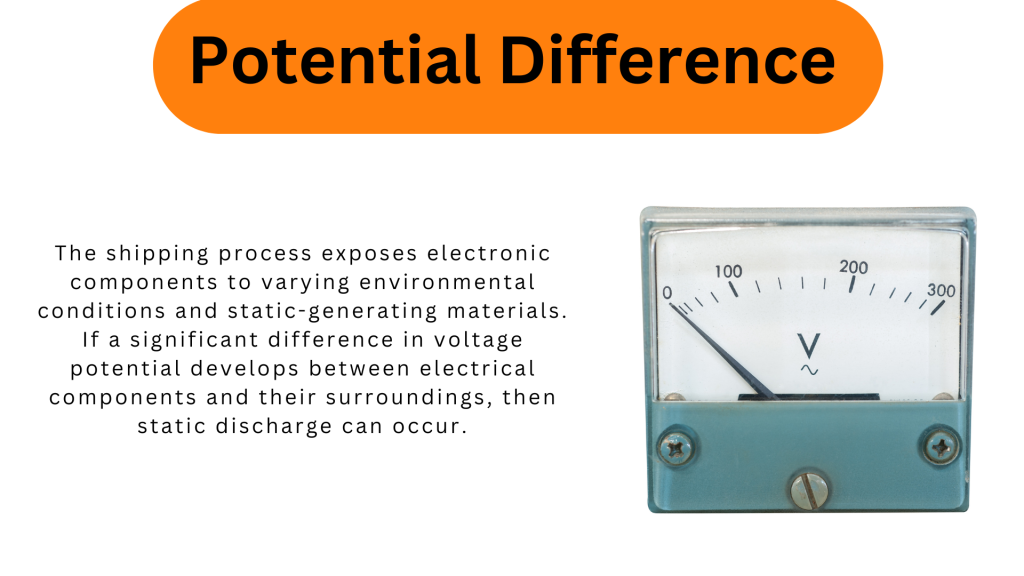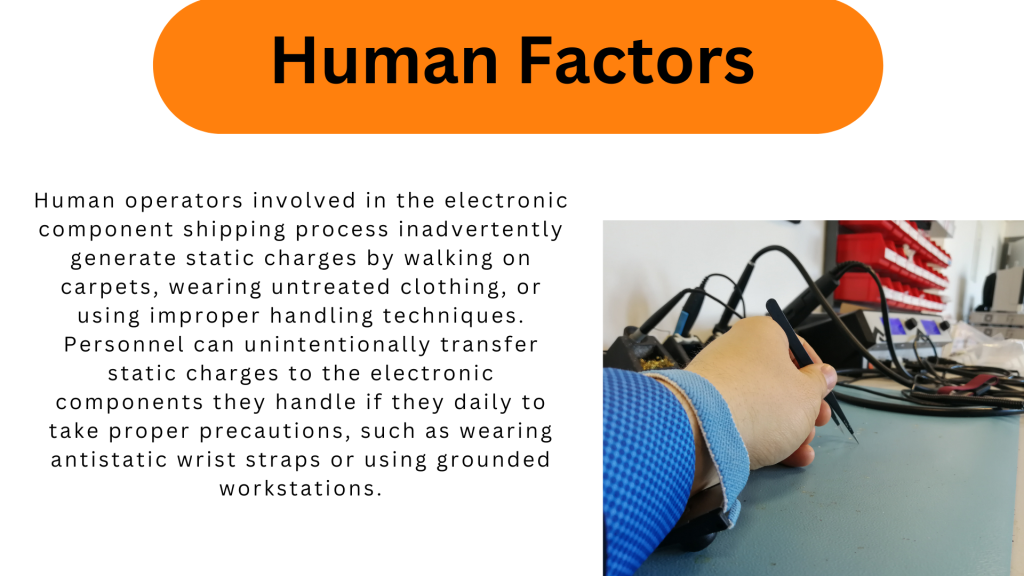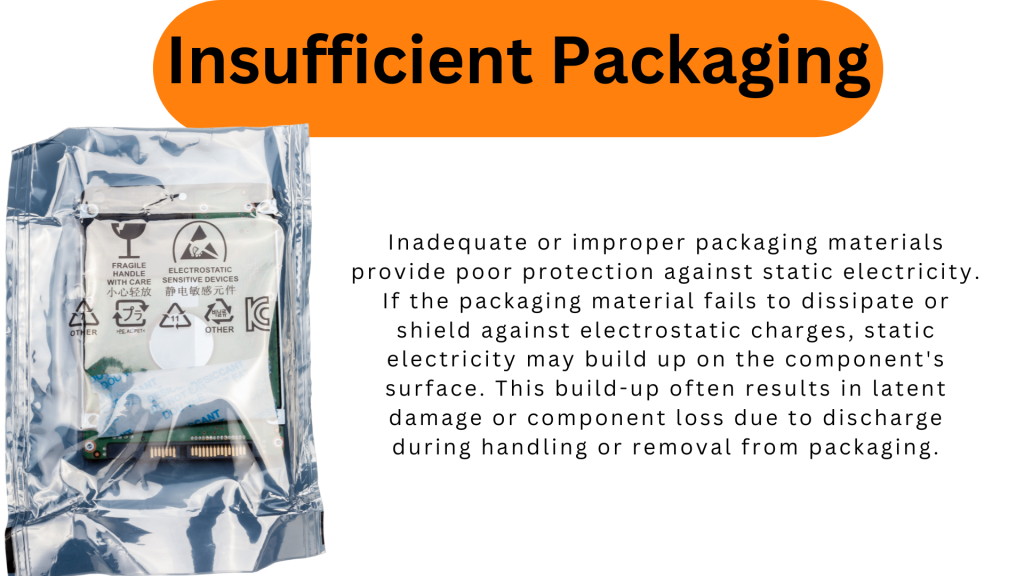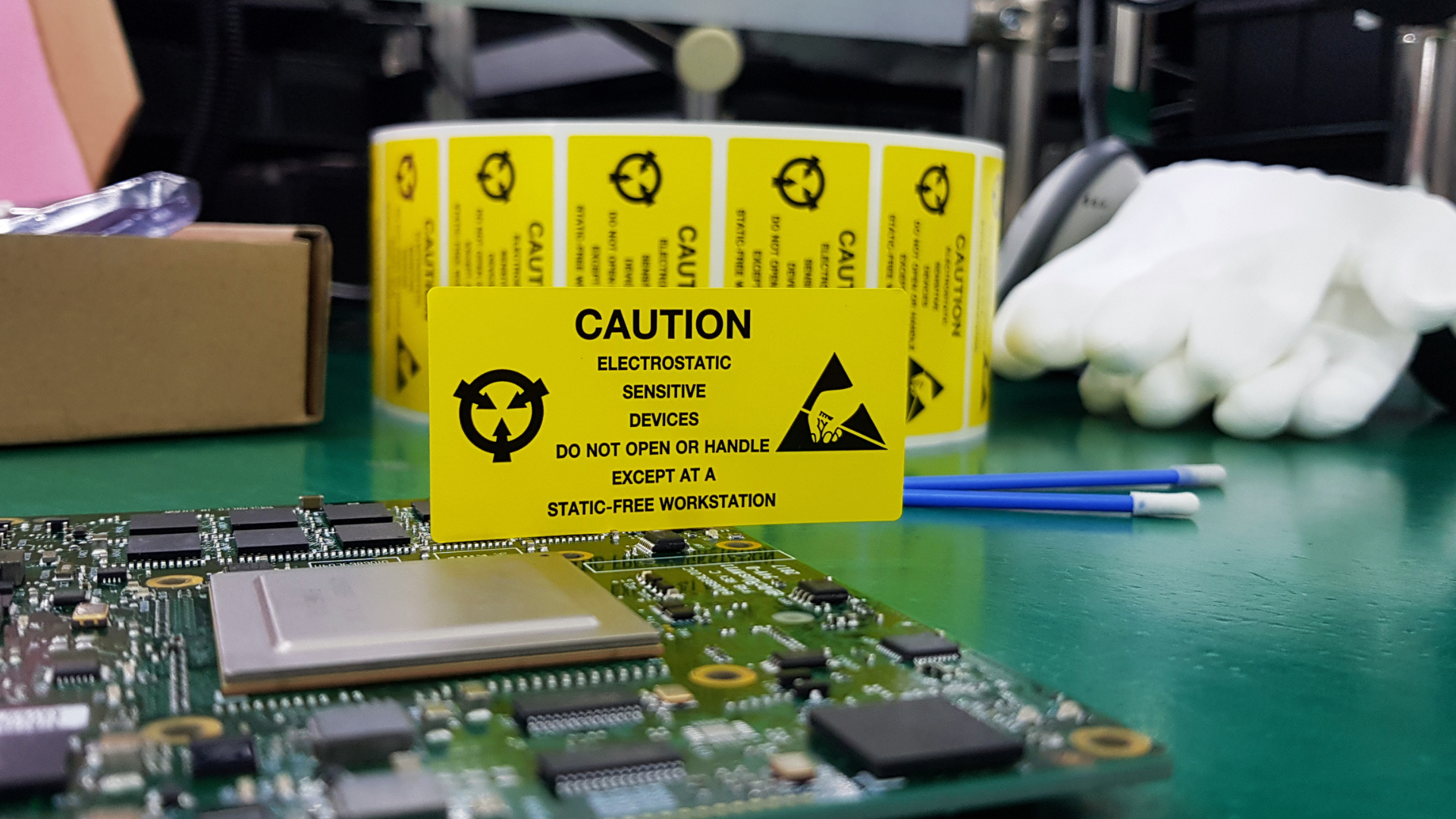Electronic components are highly-sensitive to electrostatic discharge. Even minute discharges result in performance decline and component failure. The ESD Association estimates product loss and damages from ESD cost the electronics industry billions of dollars each year.
The trend towards increasingly dense components makes electrostatic discharge (ESD) control programs and safe shipping strategies a top priority for manufacturers and distributors. As the electronics industry trends towards lower operating voltages and greater component integration, modern electronics components are even more vulnerable to the effects of electrostatic discharge.
Electrostatic discharge prevention technologies aren’t new, but the evolving complexity of modern electronic components underlies a growing focus on developing new products and practices to prevent product loss. In this blog, we’ll discuss the challenges of static electricity and several new ESD protection products and initiatives announced in the last twelve months.
Static electricity and ESD Defined

If you’ve ever drug your feet over the carpet before grabbing a metal doorknob and experienced a sharp, tingling sting, you’ve met static electricity first-hand.
Static electricity is a form of electrical charge that accumulates on the surface of an object due to an imbalance of electrons. It occurs as two objects come into contact and then separate, causing a transfer of electrons between them. This transfer makes the object that loses an electron positively charged and the object that gains an electron negatively charged.
The imbalance of charges between the two objects also creates an electric field. When these charged objects come into contact with a conductor or another object, the excess charge forms an electrostatic discharge (ESD). Under the right conditions, ESD produces a visible spark or shock. Certain materials, such as plastics, synthetic fabrics, and insulating materials, are more prone to generating static charges. Certain materials and components, particularly electronic components, are more sensitive to the effects of ESD.
A variety of mechanisms produce static electricity. Young science students first experience static electricity through friction experiments, creating electrostatic discharges by rubbing various materials together. Separation generates ESDs under the right conditions, too. Induction generates static electricity without requiring physical contact. Instead, an object is charged simply by proximity.
Related: Amphenol Sensors Offer EV Owners Powerful Robust Early Detection of Thermal Runaway
Static Electricity in the Manufacturing and Distribution Setting
In manufacturing and industrial distribution settings, static electricity poses a significant concern for product damage and loss. Static-induced damage leads to malfunction and even complete failure of electronic components, with an estimated 3%-8% of electronic components lost to ESD-induced damage each year.
ESDS are electrostatic discharge susceptible items, and many electronic components fall within this designation. These include, but are not limited to,
- Integrated Circuits
- Microcircuits
- Diodes
- MOSFET, IGBT, and BJT transistors
- Thick and thin film resistors
- 3-D Printed circuit boards
- Piezoelectric crystals
Electrostatic discharge within manufacturing and distribution settings creates a variety of problems. Not only can electrostatic discharges damage sensitive electronic devices, but static electricity also interferes with electronic systems and creates safety hazards.



Related: Learn More About the 3-D Printing Manufacturing Revolution here!
Renewed Emphasis on ELectrostatic Discharge Protection in 2023
The projected growth of the global market for ESD packaging predicts the industry will quickly skyrocket from $571.3 million in 2023 to $721.4 million in 2026. Billions of dollars in product loss each year warrant the electronics industry’s continued interest in research. New innovations must enhance electrostatic discharge protections for evolving and more complex electronic components. Though the issue took hold across the electronics industry in the 1990s, the evolution of electronic components requires diligent and persistent focus on this key issue.
In the last year, several key agreements, innovations, and products provide the electronics industry with enhanced electrostatic discharge protections. These advances promise to prevent substantial loss and open doors for greater agility and responsiveness in manufacturing.
Mechnano Introduces New 3-D Printing Resin
In January 2023, Mechnano and Tethon3D announced the development of a new high-temperature, rigid ESD material named C-Lite. Mechno developed the product to support much-needed agility through 3-D printing and additive manufacturing within the electronics industry. The new resin addresses challenges manufacturers face when developing custom nano uniform ESD components capable of withstanding numerous cycles at temperatures as high as 245℃ with uncompromising ESD protection.
Samsung Announces New ESD Research Partnership
The electrostatic discharge causes unexpected and destructive damage to semiconductor devices and remains a major concern for the computer chip industry. Consequently, his significant concern lead Samsung to announce a new partnership with the Indian Institute of Science to develop cutting-edge ESD device solutions engineered to better protect Integrated Circuits (ICs) and system-on-chip (SoC) products. Announced in February 2023, Samsung plans to deploy this research in the company’s advanced process nodes.
Freudenberg Materials Launches New Packing Textile
Also in February 2023, Freudenberg Performance Materials announced the expansion of their technical packaging textiles product line with the new Evolon ESD. Their new material offers permanent electrostatic discharge protection for automotive and industrial parts containing electronic components. Made from recycled polyester, Evolon ESD further promotes sustainability as it helps manufacturers reduce scrap waste.
TDK Launches New TVS Diode Series For Complete Protection of USB-C
TDK released a new series of compact TVS diodes in May 2023. These diodes offer complete ESD protection for USB-C ad applications such as Thunderbolt, HDMI, DVI, and SWP/NFC. The series features low clamping voltages, compact package shapes, extremely flat heights, and robust ESD protection rated up to 15 kV.
If you’re looking for B2B components and parts, search over 300 million products from many sources here!
Learn More About Industry Standards For ESD Control Programs
ESD-safe protocols are not a one-size-fits-all shipping solution. Some components are more sensitive to static electricity, and component construction may preclude commonly used packaging materials. Manufacturers and distributors follow industry standards and guidelines to establish the most appropriate shipping practices for specific electronic components.
While the electronics industry once relied on ESD protocols established for other industries. In response to the rapid growth and complexity of modern electrics, manufacturers and the associations that study this issue cooperatively produced guidance documents specific to the electronics industry. These standards are reviewed and updated at regular intervals in response to evolving technology and the complexity of electronics and components.
Current standards fall into three main categories: program guidelines and requirements, product-specific requirements and procedures for grounding, and standardized test methods for testing and evaluating the ESD potential of products and materials.
To learn more about current industry standards, please visit these links:
- ESD Guidance and Program Requirements
- ANSI ESD S20.20 – Standard for the Development of an ESD Control Program
- IEC 61340-5-1 – Protection of electronic devices from electrostatic phenomena – General requirements
- ANSI/ESD S8.1 – Symbols-ESD Awareness
- ANSI/ESD TR20.20 – ESD Handbook
- Product-Specific Requirements and Procedures for Grounding and Packaging
- ANSI/ESD S6.1 –Grounding
- ANSI/ESD S541 –Packaging Materials.
- Standardized Test Methods for Evaluating Products and Materials
- ANSI/ESDA/JEDEC JS-001– Device Testing, Human Body Model
Interested in the latest trends and innovations in technology? The Mectronic blog is your source for trusted insight into the technology world. Check our blog for regular updates!

Mectronic has been connecting sellers and buyers for 25 years. With powerful search tools and over 300 million products, Mectronic helps you find the B2B components you need from sources you trust. Find the parts and components you need today here!

